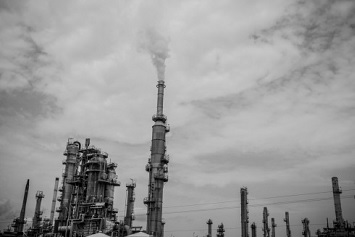In its proposal to revise portions of the Obama EPA’s 2016 New Source Performance Standards (NSPS) to control emissions of the methane and other air pollutants from crude oil and natural gas facilities (40 CFR part 60, subpart OOOOa), the Trump EPA has made its intentions clear—save the oil and gas (O&G) industry up to $484 million in compliance costs for the period 2019 to 2025 while over the same period allow 380,000 short tons of additional methane emissions when compared to the levels that would have resulted from the 2016 NSPS. Other reductions contemplated in the 2016 rule that would not occur under the proposal include approximately 120,000 tons of volatile organic compounds (VOCs) and about 4,700 tons of hazardous air pollutants (HAPs).

The EPA concedes that the forgone VOC emissions reductions may degrade air quality and adversely affect health and welfare effects associated with exposure to ozone, PM-2.5, and HAPs, but states that “data limitations prevent the EPA from quantifying forgone VOC-related health effects.”
The Agency’s proposal includes scant mention of the climate effects of the forgone reductions in methane. Over a 100-year period, methane has about 25 times the global warming potential of carbon dioxide. The EPA estimates that the proposed revisions will result in about 8.5 million metric tons of carbon dioxide equivalent released into the atmosphere.
While industry welcomed the proposal, others view it as the third major action the Agency has taken to roll back actions the Obama administration took to mitigate emissions of greenhouse gases (GHGs) to address climate change. The Trump EPA is also moving to rescind the Clean Power Plan affecting fossil fuel power plants and lessen the corporate average fuel economy (CAFE) and GHG emissions standards for model year 2012–2026 on-road passenger vehicles.
Moreover, the Agency says this proposal is just the first of several intended to revise the 2016 O&G NSPS.
The EPA is proposing the revisions in response to petitions for reconsideration industry made following promulgation of the 2016 O&G NSPS. While the petitions addressed many aspects of the NSPS, the current proposal is primarily concerned with the following.
Fugitive Emissions
The 2016 NSPS required owners/operators of new and modified well sites to conduct an initial monitoring survey within 60 days of the start-up of production and semiannual monitoring surveys thereafter. Under the proposal, annual monitoring would be required; monitoring at low-production well sites would be required biannually.
The 2016 rule also required an initial monitoring survey within 60 days after start-up of a new or modified compressor station and then quarterly monitoring afterward. The proposal would change that schedule to either semiannual or annual monitoring.
In addition, the proposal would reduce monitoring requirements specific to O&G facilities on Alaska’s North Slope and lengthen the time frame within which leaks of fugitive emissions must be repaired.
State Programs
In the 2016 rule, the EPA said it had been unable to conclude that any state or local program for addressing fugitive emissions could be deemed “at least equivalent” to the requirements in the O&G NSPS due to differences in both the sources covered and specific requirements. Accordingly, the EPA did not find that O&G operators who complied with a state program would be in compliance with Subpart OOOOa.
In the proposal, the EPA says that it has now determined that the fugitive emissions programs of several states are at least equivalent to the federal requirements. Therefore, owners/operators who satisfy the requirements of those states would be found in federal compliance. The at-least-equivalent states listed in the EPA’s proposal are California (well sites and compressor stations), Colorado (well sites and compressor stations), Ohio (well sites and compressor stations), Pennsylvania (well sites and compressor stations), Texas (well sites), and Utah (well sites).
PE Certifications
The 2016 rule required that a qualified professional engineer (PE) certify when it is technically infeasible to route pneumatic pump emissions to an existing control or process. The EPA is now proposing to amend the certification requirements to allow either a PE or an in-house engineer with appropriate expertise to make those certifications. Similarly, the EPA is proposing to allow in-house engineers with appropriate expertise to evaluate designs of closed vent systems and certify that their design and capacity are sufficient to route emissions to a control device from centrifugal compressor wet seal fluid degassing systems, reciprocating compressors, pneumatic pumps, and storage vessels.
The proposal would also make it simpler for owners and operators to use alternative means of emission limitation (AMEL) at multiple sites.
Other Proposed Revisions
In the action, the EPA is also proposing technical clarifications regarding well completions (location of a separator during flowback, screenouts, and coil tubing cleanouts), onshore natural gas processing plants (definition of capital expenditure and monitoring), and storage vessels (maximum average daily throughput). General clarifications associated with the certifying official and recordkeeping and reporting are also proposed.
The prepublication version of the EPA’s proposed rule is here.
